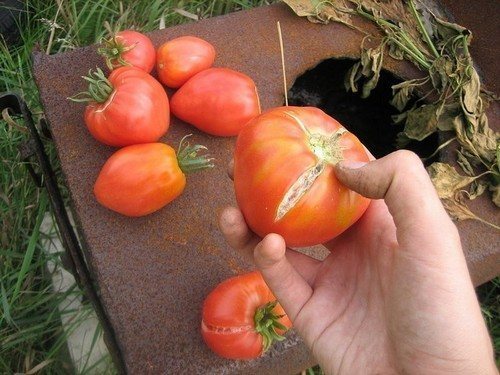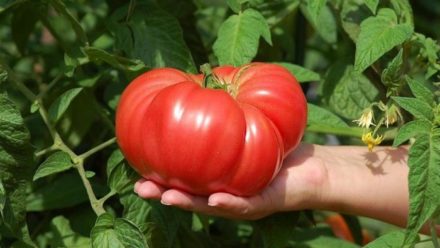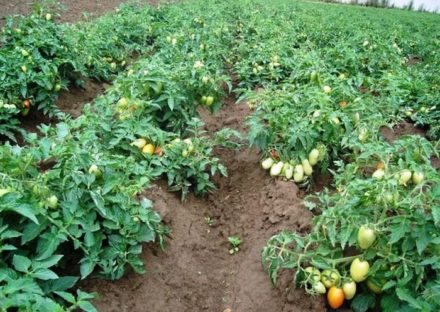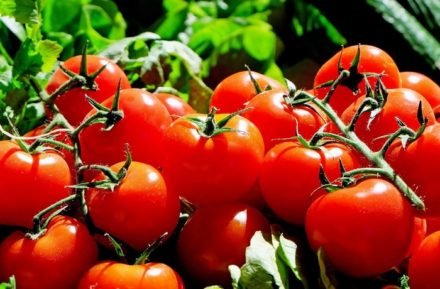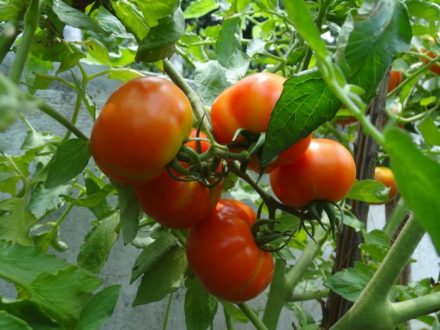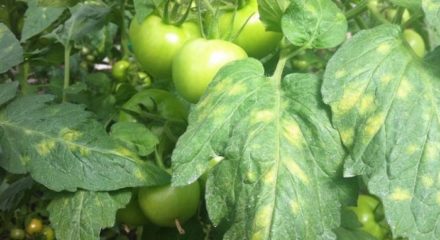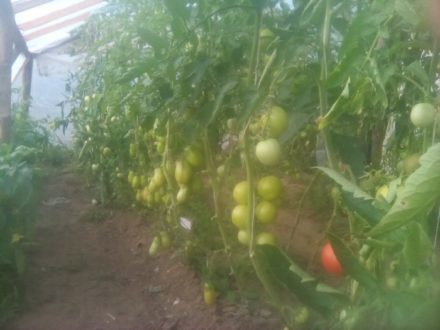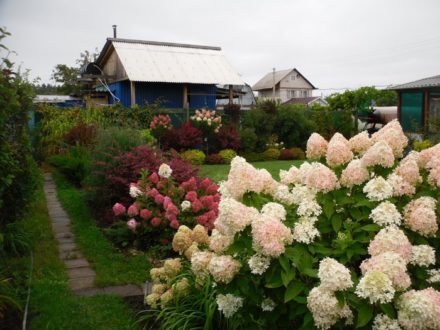Strong, elastic, with perfect skin, tomatoes are ideal for canning and cooking. Improper care, non-compliance with watering regime and weather lead to cracking of fruits at the ripening stage. Problems arise when grown in a greenhouse or in open ground, regardless of the variety.
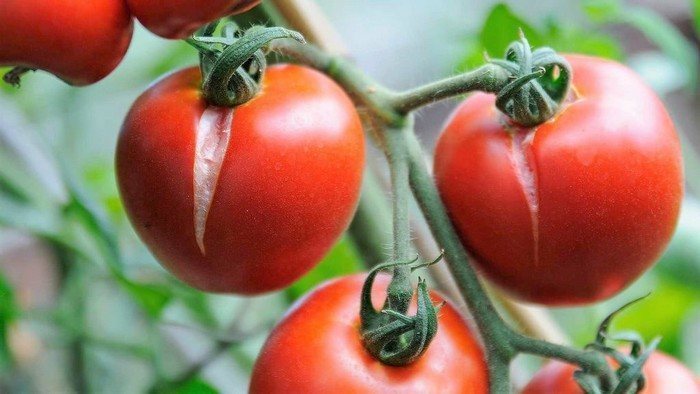
Causes of cracking tomatoes
Cracks in the skin of a tomato can be minor, in the form of a thin mesh, or deep, covering the entire surface of the fruit. Most often, the reasons are associated with improper care or unfavorable microclimate in the greenhouse.
Cracks are caused by:
- Incorrect watering. Tomatoes do not tolerate dry soil. At the first watering, the plants begin to greedily absorb moisture and become filled with juice. The thin skin cannot keep up with the rapidly increasing volume and bursts.
- Feeding. Excessive amounts of mineral fertilizers lead to cracking of the fruits.
- Unfavorable microclimate. Violation of growing conditions is typical for greenhouses. On hot days, the air temperature can reach 40–50 degrees. The skin becomes dense and loses elasticity. When the temperature drops and the soil becomes moist, it cannot withstand it and bursts.
- Stepsonning. Removing side shoots has a beneficial effect on the growth and ripening of tomatoes. But excessive pinching leads to oversaturation of the bush with moisture. The fruits receive too much nutrition and crack.
- Diseases.Rot, Alternaria blight, and late blight lead to fruit damage. You can notice a bush disease by curled or yellowed leaves, lack of flowering, and blackening of the stems.
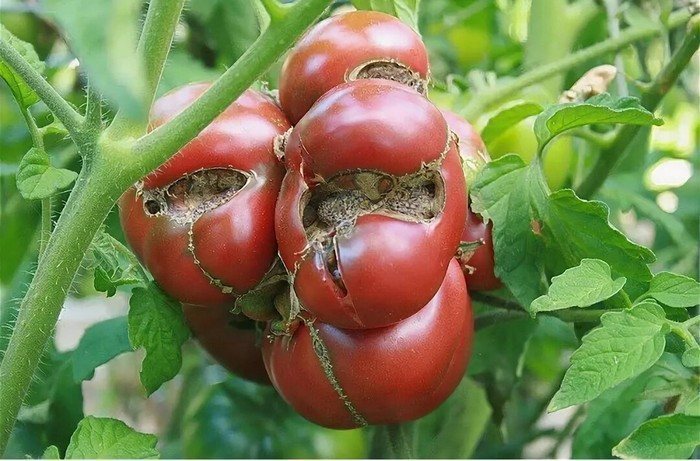
Bursting tomatoes lose their attractiveness, are poorly stored, and cannot be transported. In addition, pathogenic microorganisms easily penetrate through the cracks, which can lead to the death of the crop.
How to avoid cracking
Timely measures will help avoid crop loss. To prevent cracking it is important:
- Organize watering. The optimal watering regime for tomato beds is 2 times a week with an interval of 3 days. Depending on weather conditions, additional moisture or temporary cessation of irrigation is acceptable. The soil should always remain slightly moist, without drying out or becoming excessively swampy.
- Choose the right landing site. Under the scorching sun, the skin becomes dense and cracks. Tomatoes should be planted in a slightly shaded area, but with good lighting and free air ventilation. If there is no such place, on hot days the plants should be protected from direct sunlight with a net.
- Don't forget about mulching the soil. Soil covered with straw, small brushwood or sawdust retains moisture better.
- Use fertilizers correctly. During bush growth, tomatoes need phosphorus and nitrogen. When fruits ripen, potassium is needed. It is important to strictly adhere to the instructions, do not exceed the concentration and apply fertilizing only to moist soil.
- Choose varieties that are resistant to cracking.
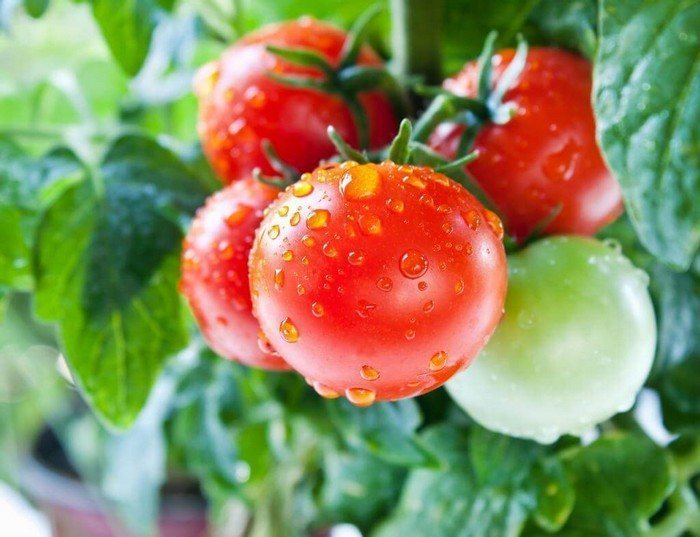
When growing tomatoes in a greenhouse, it is important to organize regular ventilation, adherence to temperature conditions and protection from diseases and pests.
Varieties resistant to cracking
Choosing the right variety will help you avoid problems with tomato ripening. The fruits grow with dense pulp and elastic skin, are suitable for pickling or fresh consumption, and tolerate storage and transportation well.
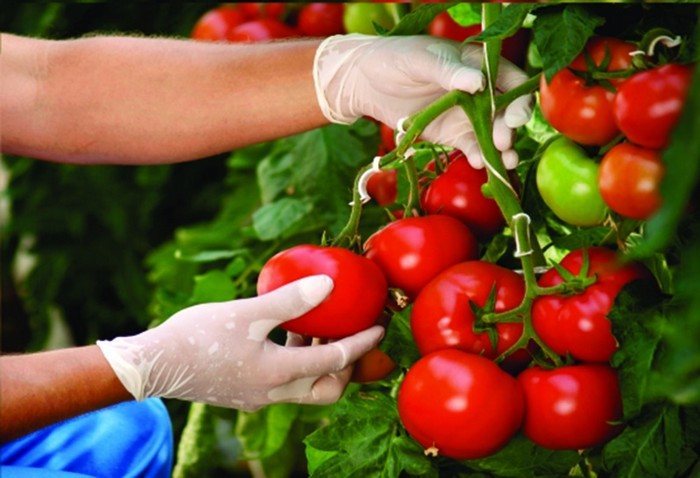
Resistant varieties for open ground:
- Bohemia F1;
- Asteroid;
- Grushovka
- Rio Grande;
- Vladimir F1;
- Centaur;
- Miracle.
Suitable for greenhouses:
- Hussar;
- Malibu;
- Rosaletta;
- Alcazar;
- Origami.
Cracking of tomatoes is not a disease, but the result of improper care or unfavorable weather conditions. If a tomato bursts, it cannot be preserved, transported, or stored. Such fruits should be immediately used to prepare tomato paste, juice or fresh salad.


